#Trigger Point Physiotherapy
Explore tagged Tumblr posts
Text
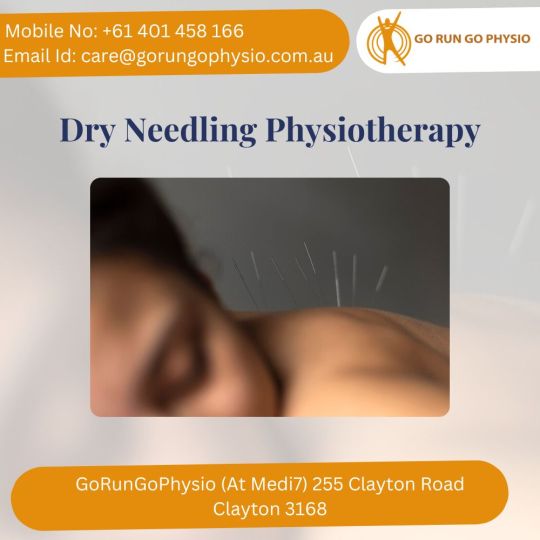
Dry Needling: A Revolutionary Approach to Pain Relief in Physiotherapy
Dry Needling is an advanced physiotherapy technique designed to target muscle pain and tension at its source. By inserting fine needles into specific trigger points, this treatment promotes healing, reduces muscle tightness, and restores mobility. Whether you're recovering from an injury or seeking relief from chronic pain, dry needling offers a precise and effective solution to accelerate your recovery and enhance your well-being.
0 notes
Text
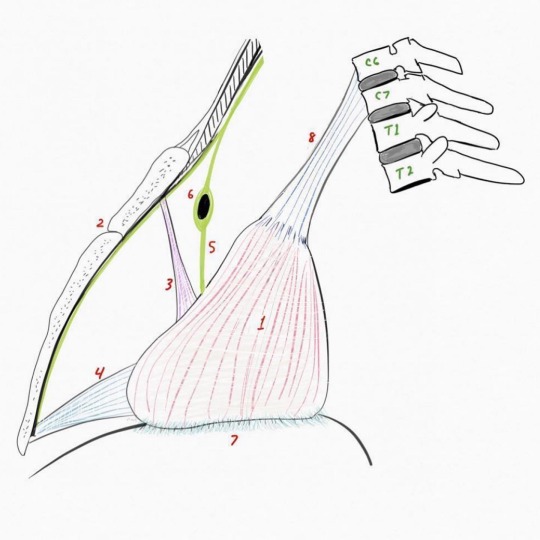

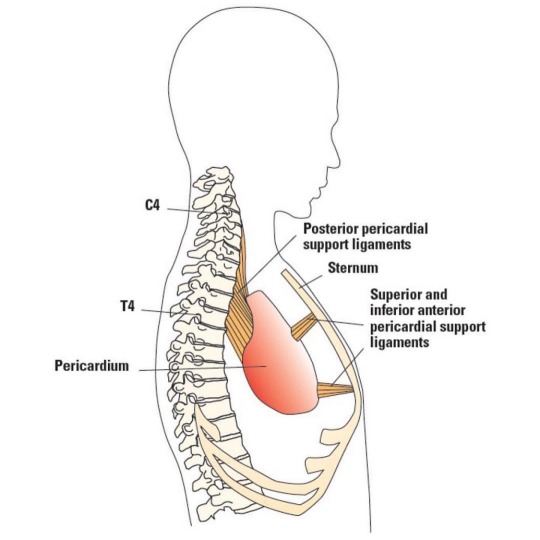
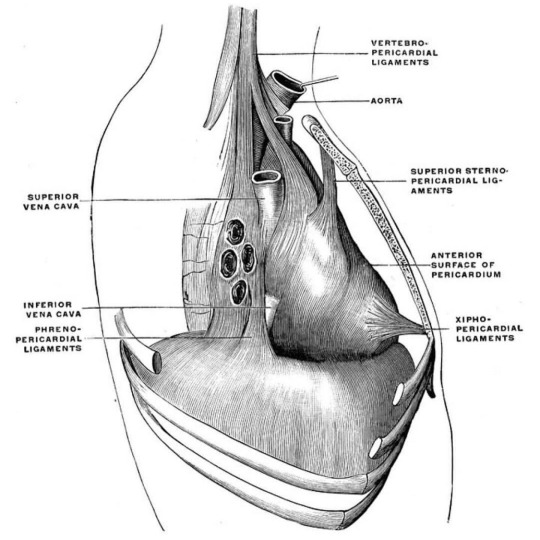
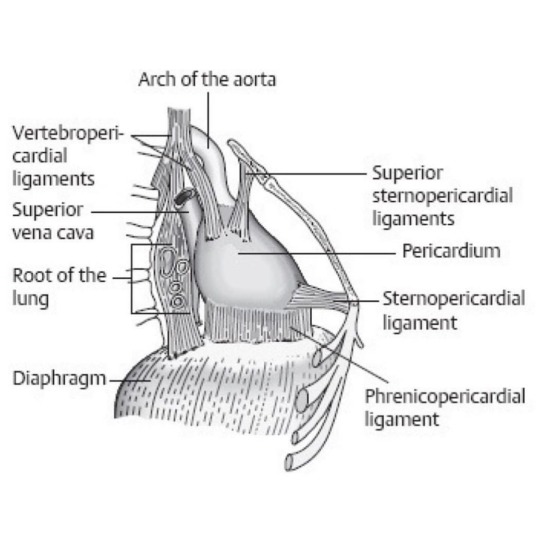
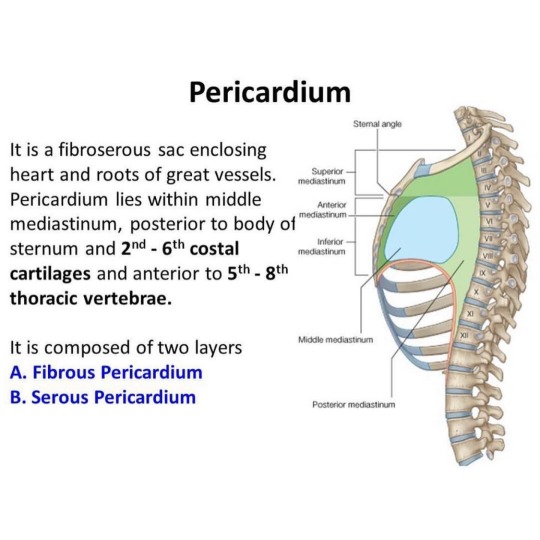
HEART-NECK-PAIN-LINK
⠀
THE PERICARDIUM
⠀
[FASCIAL ANATOMY - OSTEOPATHIC APPROACH]
⠀
This post and illustrations are an amazing follow up to my previous post about the pericardium and connection to neck pain.
⠀
The heart (1) has obvious importance for sustaining life but it has a lesser known connection to the more “orthopedic” problems commonly seen amongst patients. Specifically, the fascial outer layering called the pericardium is directly connected to multiple tissues in the thorax and spine.
⠀
On the anterior is the connection to the sternum (2) via the superior and inferior sternopericardiac ligaments (3,4). Superiorly, the link is the cervico-pericardiac ligament (5), which is connected to the deep cervical fascia (green) and houses the trunk of the brachio-cephalic vein (6). Inferiorly, the pericardium directly connects to the diaphragm (7). Lastly, and perhaps most interesting, is the posterior-superior connection to the cervical spine. The Vertebro-pericardiac ligament (8) directly connects the heart to the anterior aspects of C6 and C7.
⠀
Tension on bones is not just muscular, but can be from visceral connections such as this. Tension in this tissue can contribute the anterior translation and sheer forces in the vertebrae and discs. This raises the question why we see so much degeneration, disc herniation and pain at the lower cervical spine. Perhaps a direct connection of cervical problems to poor breathing patterns? Maybe we can positively influence the heart via the neck as therapists? The anatomical LINKS provide us the possibilities!
⠀
How I manipulate the pericardium with a fascial recoil technique via the sternum you can see in my previous post. You can influence the pericardium via the superior and inferior sternopericardiac ligaments (3,4).
⠀
Credit: @anatomylinks
(Physio Osteo Book)
#Physiotherapy#Sports Physiotherapy#Osteopathy#Myofascial Release MFR#medicine#Trigger points#treatment#fascia#heart#heart/diaphragm connection#fascial ligament on pericardium#pericarium#breath#breathing
8 notes
·
View notes
Text

Chiropractor in Surrey and New Westminster BC|Chiropractic
New Westminster and Surrey Chiropractor – At Prana Physiotherapy we are specialized in providing chiropractic services. Call now on - (604) 260-018.
Visit at: https://pranaphysiotherapy.ca/services/chiropractic/
#Chiropractic#vertebral subluxation#Trigger points and tight back muscles#Physio Therapy#Prana Physiotherapy
0 notes
Text
Unlock the secrets of successful acupuncture. Our comprehensive guide reveals the essential dos and don'ts for a safe and effective treatment.
#acupuncture mississauga#physiotherapy home service mississauga#trigger point massage mississauga#physiotherapy treatment mississauga
0 notes
Text
Had a patient unwillingly toot while one of his buttcheek was out and about as I was tenderly applying myofascial release of his tight piriformis muscle that recently caused him to walk like a mechanical toy soldier.

#His buttcheek was clenched so tight#I was like wow he has a big trigger point#no#mans was just holding in his damn fart#smelled#so badddd#luckily#masked#I didn't gag#anyways#i am alive#patient was queefed but I reassured him it was okay#medical stories#physiotherapy
1 note
·
View note
Text
I've tried to not write vent posts because usually they don't help me that much but right now I have no other place I feel like I can just puke all this to, so into the void it goes. I'm so stressed and so tired and somehow SHIT KEEPS GETTING WORSE. like yeah it could always be even worse worse but I am already at my limit. Money's tight, I have bills to pay, I don't clean enough and I reap the consequences of my actions, my dysphoria is kicking me every day so hard and overall body-image issues are STILL hounding me. I don't have a job, I can barely take care of myself, I feel like I'm not giving enough to the people around me and I suck as a person (I know this is probs depression and insecurity talking but I just hate letting people down and I feel like I just keep letting down every single person in my life.) I need to pay for doctor and physiotherapy stuff, I need to pay for meds. The building I live in is being renovated and the nonstop loud drilling sound makes me want to cease existing. the renovations or fixing or whatever theyr doin causes all other type of complications I really dont need rn. I feel so useless and drained all the time. I found bugs in my apartment, I want to puke, I blame myself because I am the one who didn't do enough to prevent things from getting this bad. I'm worried about the people around me, I'm worried about people I don't even know. Shit's so bad all the time like what the fuck is even the point. I know what the point is I know I know I know but I've been in a shit headspace for so long. but I cant even talk about it to people whose JOB is to help because I'm scared if my depression diagnosis goes back to more severe levels on paper, I won't get my transition going and it's already been such a long wait and it's already so precarious and I won't be able to take it if they kick me out again. what the fuck. like. I can't handle all this. I can. I have to. but for now I just feel like total shit. why can't I just function better and be better and do better. it shouldn't be this hard. what the fucjk. I'm so tired I can't do this. I will do it I will continue please dont worry about me but like FUCK. ughhh. whatever Im gonna go take the trash out or something and drink some water. all this stress better not trigger my aura migraines again I've been free from those for long dont fucking come back. fucking auugghhh shits bad
#vent#dont mind meeeeeeeeeeeee#delete later#this isn't even all of it. theres so much more going on in my life rn but I just cant
5 notes
·
View notes
Note
haha question. what exactly do you do at the "huh my wrist kinda hurts" stage. no reason at all (uh oh my wrist hurts)
oh this is a bit of a late answer but
STOP whatever triggers your wrist pain the most. test it a little on various activities! once you identify whatever's the biggest cause of it, limit that activity as much as you can while you sort it out
remember that the wrist is a vertical hinge and does NOT like moving from side to side . unfortunately typing on a keyboard makes you do this and its difficult to avoid
look up some stretches! i used this one from thechekhov as a starting point before i properly started physiotherapy. it's also a good idea to begin familiarizing yourself with the anatomy of the hand, wrist, and arm
IF the pain is flaring up to the point where it's becoming kind of unbearable, my physiotherapist recommended that i do a hot-cold soak. submerge your wrists/forearms in hot water (not boiling hot, but hot enough to still be comfortable) for about 5-7 minutes, then switch to submerging them in cold water (again, not freezing hot, but definitely below room temperature) for another 5-7. repeat two or three times. the hot/cold is supposed to help the blood flow. also remember that i am not a licensed health professional and i was taught this almost four years ago so there is a chance that some details may be misremembered. however i did use this and it did help for a bit so!
SEE A DOCTOR BEFORE IT GETS WORSE. if you're able to, seek massage or physiotherapy for it also! i was in physiotherapy for about three years for this, and it does help! biweekly appointments became weekly, became twice a month, became monthly, became every few months. my wrists still bother me, but they're not nearly as unbearably painful as they used to be =]
if you're in an environment such as school or work that requires you to keep doing Thing That Hurts Your Wrists then see if you can get accommodations for it! this may require a doctor's note but it could be very useful in the long run
i stopped wearing watches and bracelets because my watch became too heavy for me to keep up and they prevented me from resting my wrist flat. you may want to consider this if it applies to you
i also began training myself to sleep flat on my back with my hands either at my side or folded over my stomach vampire-style because sleeping on your side etc Will exacerbate your shoulders and wrists
remember that preventative measures are always preferable to mitigative treatment, but effective mitigation always begins with diligence and awareness!
#i was kind of lucky to be introduced to the concept of repetitive strain injuries early on through my musician's health unit in high school#less lucky because task hyperfixation supremely caused me to ignore the signs for a while#remember kids if your wrists hurt even when you're barely doing anything that is NOT normal#ask
10 notes
·
View notes
Text
Physiotherapy in AS Rao Nagar
Physiotherapy is a healthcare profession that focuses on the assessment, diagnosis, treatment, and prevention of physical impairments, disabilities, and pain. It aims to restore movement and function in individuals affected by injury, illness, or disability. Physiotherapists use a variety of techniques to help patients recover, improve their physical abilities, and enhance their quality of life.
Physiotherapy can include:
Exercises
Massages
Treatments based on physical stimuli, such as heat, cold, electrical currents, or ultrasound
Assistive devices
Patient education and training
Physiotherapists usually recommend movement and exercise to help improve your mobility and function. This may include:
exercises designed to improve movement and strength in a specific part of the body – these usually need to be repeated regularly for a set length of time
activities that involve moving your whole body, such as walking or swimming – these can help if you're recovering from an operation or injury that affects your mobility
exercises carried out in warm, shallow water (hydrotherapy or aquatic therapy) – the water can help relax and support the muscles and joints, while providing resistance to help you gradually get stronger
advice and exercises to help you increase or maintain your physical activity – advice will be given on the importance of keeping active, and how to do this in a safe, effective way
advice on using mobility aids – such as crutches or a walking stick to help you move around
Your physiotherapist may also recommend exercises that you can continue doing to help you manage pain in the long term or reduce your risk of injuring yourself again.
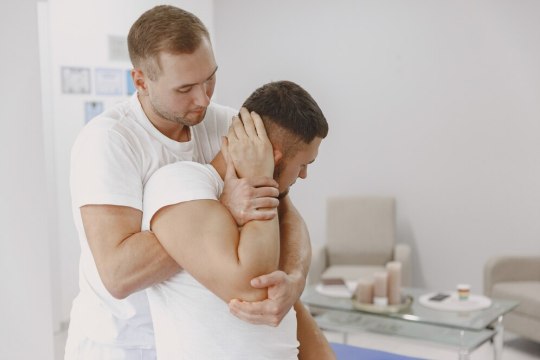
Types of Therapy in Physiotherapy:
Manual Therapy: Hands-on techniques to manipulate muscles and joints, aiming to relieve pain and improve mobility.
Exercise Therapy: Customized exercise programs designed to strengthen muscles, enhance flexibility, and promote overall physical fitness.
Electrotherapy: Use of electrical modalities, such as TENS (Transcutaneous Electrical Nerve Stimulation) and ultrasound, to manage pain and stimulate healing.
Heat and Cold Therapy: Application of heat or cold to alleviate pain, reduce inflammation, and promote healing.
Advanced high-power laser therapy: It is a medical treatment that uses focused light energy to promote healing and relieve pain.
Dry Needling: Involves inserting thin needles into trigger points in muscles to relieve pain and tension.
Acupuncture: Sometimes incorporated for pain management and to promote healing.
Education and Counseling: Teaching patients about their condition, self-management strategies, and injury prevention techniques.
Pediatric Physiotherapy: Specialized therapy for children to address developmental, neurological, or orthopedic issues.
Cupping therapy: It is an ancient form of alternative medicine that involves placing cups on the skin to create suction. This suction can help improve blood flow, relieve pain, and promote healing.
Interferential therapy: It is a type of electrotherapy that is used to relieve pain and promote healing skin.
3 notes
·
View notes
Note
do you have any headcanons about lestappen and one of them has chronic pain or an illness?
Hi anon, thanks for the ask ❤️
I have some ideas how I would approach a Lestappen fanfic about chronic pain. I have put it below the cut.
Just as a content warning - this is about chronic pain for one of the drivers so avoid if you think it may be triggering for you. As always with all these things this is fiction. If I were to write something like this I would probably do quite a bit of research but this is just off the top of my head....
Charles is in a heated championship battle with his teammate Lewis. It's super stressful and there is a lot of noise in the media about how Lewis has the psychological advantage given he already has championship titles.
Charles starts to experience aches and pains that don't go away after normal treatments such as ice baths and physiotherapy. As the season progresses things start getting worse and the pain goes from uncomfortable to almost unbearable and driving is getting harder and harder. After each race he is in agony. Unfortunately everyone keeps assuming his pain is psychological and a result of the pressure of fighting Lewis and they keep telling him to relax. It's not helping and Charles is getting desperate because nobody will believe him but he knows his body better than anyone else and something is wrong.
Cue Max who has known Charles since they were young. He has also been infatuated with Charles for years and is the first person to start noticing changes in the Monegasque - the way he holds himself, the way he moves, how he looks after a race, the way he winces when Max wraps an arm around his waist.
Max confronts Charles and Charles breaks down and tells him what is going on and Max becomes the first person who truly honestly believes that Charles is suffering. Max doesn't just pass off Charles' issues as 'not being able to cope with pressure'.
Max is forceful when it comes to people that he cares about and he has always cared so much for Charles. He becomes an advocate for Charles in terms of medical assistance and isn't afraid to come across as a dick in order to make people listen. He also becomes an outlet for Charles to vent to and tries to provide emotional support and physical help where he can.
Their relationship becomes more intense but Charles is also terrified of getting into a sexual relationship. He tries to be spontaneous with Max but often ends up curled up in pain and getting frustrated and upset with himself. Max is surprisingly patient and they work through the issues, making sure Charles stretches, applies heat pads, does all the things he needs to do in order to get his body to move in the way it should.
Their only point of contention is that Charles is still putting himself in the car and Max doesn't think its worth it given what it is doing to his body. Charles doesn't want to be held back, he is so close to the championship he has worked his whole life for. If he can just hang in there a few months he will have achieved his life dream.
15 notes
·
View notes
Text
🌟 Discover Exceptional Physiotherapy at Aparna's Physiotherapy Clinic! 🌟
Are you seeking top-notch physiotherapy services in Hyderabad? Look no further than Aparna's Physiotherapy Clinic, your go-to destination for specialized care and effective treatments.
📞 Call for an Appointment: +91 93986 73095 🌐 Visit Our Website: https://www.aparnaphysiotherapy.com/
Address 1 : Dr. Aparna's Physiotherapy Clinic, Opp. Max Showroom, Road No.5, Vanasthali Hills, Ganesh Temple Road, Vanasthalipuram, Hyderabad
Address 2 : Dr. Aparna's Physiotherapy Clinic, 2-30/2, Plot No: A-11/2, Street number 3, Kakateeya Nagar, Beside Johnsons ICSE Grammar School, Habsiguda, Hyderabad
🏋️♂️ Sports Injuries: Our expert physiotherapists are dedicated to helping athletes recover and enhance performance. We tailor rehabilitation programs to accelerate healing and prevent future injuries.
🌸 Women's Health: We understand the unique healthcare needs of women. Our specialized treatments promote wellness and aid in addressing various women's health concerns.
💉 Dry Needling Therapy: Experience relief from muscular tension and pain through our advanced dry needling therapy, targeting trigger points and promoting muscle relaxation.
🤲 MFR Therapy (Myofascial Release): Restore mobility and alleviate discomfort with our specialized MFR Therapy, addressing restrictions in the fascia to improve movement and reduce pain.
🔹 Laser Therapy: Harness the healing power of laser therapy to expedite tissue repair, reduce inflammation, and enhance overall recovery from injuries or chronic conditions.
🌀 Cupping Therapy: Opt for cupping therapy, a traditional technique to promote blood circulation, ease muscle tension, and improve overall well-being.
🎽 Taping Therapy: Benefit from taping therapy designed to provide support, stability, and pain relief, enhancing your recovery and enabling you to regain optimal functionality.
Ready to experience exceptional physiotherapy care? Schedule your appointment now!
Take the first step towards improved well-being with Aparna's Physiotherapy Clinic—your trusted choice for physiotherapy in Hyderabad! 💪
#physiotherapy#physiotherapyinHyderabad#physiotherapyclinic#physiotherapist#aparnasphysiotherapy#bestphysiotherapyclinic#bestphysiotherapist
10 notes
·
View notes
Text
What is the difference between Acupuncture And Dry Needling?
Acupuncture and dry needling are two different techniques that involve the insertion of thin needles into the skin for therapeutic purposes. However, the two techniques have some important differences.
Acupuncture is a traditional Chinese medicine practice that has been used for thousands of years to treat a variety of health conditions. It involves the insertion of very fine needles into specific points on the body, known as acupoints. The goal of acupuncture is to balance the flow of energy, or qi, through the body's meridians, or energy channels. Acupuncture is often used to treat chronic pain, digestive issues, anxiety, depression, and other health conditions.
Dry needling, on the other hand, is a modern technique that is often used by physical therapists, chiropractors, and other healthcare providers to treat musculoskeletal pain and dysfunction. Dry needling involves the insertion of needles into tight, painful muscle knots, or trigger points, in order to release tension and improve range of motion. Unlike acupuncture, dry needling is based on the principles of Western medicine and does not involve the manipulation of energy channels.
While both acupuncture and dry needling involve the use of needles, the two techniques differ in their goals, the points targeted, and the underlying principles. It's important to consult a qualified healthcare provider to determine which technique is right for your individual needs.
In conclusion, acupuncture and dry needling are two distinct techniques that both involve the insertion of thin needles into the skin for therapeutic purposes. Acupuncture is a traditional Chinese medicine practice that targets specific acupoints on the body to balance the flow of energy or qi through the body's meridians. Dry needling, on the other hand, is a modern technique based on Western medicine that targets trigger points in muscles to relieve pain and improve range of motion. While both techniques use needles, they differ in their goals, the points targeted, and the underlying principles. It's important to consult a qualified healthcare provider to determine which technique is appropriate for your individual needs.
For More Information Visit Our Physiotherapy Clinic in Surrey, BC
4 notes
·
View notes
Text

Massage Therapy - Prana Physiotherapy - Surrey and New Westminster BC
Massage Therapy - Prana Physiotherapy - conveniently located for Surrey and New Westminster call (604) 260-0183
Visit at: https://pranaphysiotherapy.ca/services/massage-therapy/
#Massage Therapy#Physio Therapy#Prana Physiotherapy#Sports massage combines techniques#Swedish massage#deep tissue massage#Myofascial trigger point therapy#reduce pain
0 notes
Text

Unlocking Convenience: Physiotherapy at Home in Mississauga
Maximize your convenience through physiotherapy at home in Mississauga. Our dedicated team brings effective treatment & comfort to you, promoting your recovery.
#home physiotherapy Mississauga#vestibular therapy Mississauga#vestibular rehabilitation therapy Mississauga#home visit physiotherapy Mississauga#spinal decompression therapy Mississauga#trigger point therapy Mississauga#physiotherapy virtual Mississauga#physiotherapy home service Mississauga#cupping therapy Mississauga#tmj specialist mississauga#physiotherapy treatment Mississauga#Massage Therapy Mississauga#Biomedical Dry Needling Mississauga
0 notes
Text
Dry Needling In Abbotsford - Hillcrest

Dry Needling in Abbotsford: Your Ultimate Guide
At Hillcrestphysio, we take pride in offering top-notch dry needling services in Abbotsford. As a trusted physiotherapy clinic, we aim to provide effective and comprehensive treatments tailored to your specific needs. Dry needling is an innovative and evidence-based therapy designed to alleviate pain, improve mobility, and enhance overall well-being. In this detailed article, we will explore everything you need to know about dry needling and why Hillcrestphysio is the premier choice for this service in Abbotsford.
What is Dry Needling?
Dry needling is a therapeutic technique performed by trained physiotherapists. It involves the insertion of thin, sterile needles into specific muscle trigger points to release tension, reduce pain, and promote healing. Unlike acupuncture, which is rooted in traditional Chinese medicine, dry needling is based on modern scientific research and focuses on musculoskeletal health.
How Does Dry Needling Work?
Dry needling targets myofascial trigger points, which are tight bands or knots in muscles that can cause pain and discomfort. When the needle is inserted into these points, it stimulates blood flow, releases tension, and encourages the body’s natural healing process. This results in decreased pain, improved range of motion, and better muscle function.
Benefits of Dry Needling
Dry needling offers numerous benefits, making it an excellent choice for individuals dealing with chronic pain, sports injuries, or muscle tension. Here are some of the key advantages:
Pain Relief: Effectively reduces acute and chronic pain in areas such as the neck, back, shoulders, and legs.
Improved Mobility: Helps restore flexibility and range of motion by addressing muscle tightness.
Enhanced Recovery: Accelerates the healing process after injuries or surgeries.
Reduced Muscle Tension: Relaxes tight muscles and alleviates trigger point discomfort.
Improved Athletic Performance: Optimizes muscle function, making it a popular choice for athletes.
Conditions Treated with Dry Needling
At Hillcrestphysio, we utilize dry needling to address a wide range of conditions, including:
Chronic Pain: Conditions such as fibromyalgia, arthritis, and lower back pain.
Sports Injuries: Muscle strains, tendonitis, and overuse injuries.
Postural Issues: Tension caused by poor posture or repetitive strain.
Headaches and Migraines: Trigger point release for headache relief.
Post-Surgical Rehabilitation: Promotes faster recovery and reduces scar tissue.
Why Choose Hillcrestphysio for Dry Needling in Abbotsford?
Expert Team of Physiotherapists
Our team comprises licensed and experienced physiotherapists who are trained in advanced dry needling techniques. We prioritize patient safety and comfort, ensuring every session is tailored to your individual needs.
Personalized Treatment Plans
We understand that no two individuals are the same. At Hillcrestphysio, we assess your condition thoroughly to create a customized treatment plan that addresses your specific concerns and goals.
State-of-the-Art Facilities
Our clinic is equipped with modern technology and a welcoming environment to provide the best possible care. We adhere to the highest hygiene standards, using single-use, sterile needles for every session.
Proven Track Record
Hillcrestphysio has a proven track record of helping clients achieve remarkable results with dry needling. Our patient testimonials speak volumes about the quality of care we provide.
What to Expect During a Dry Needling Session
Initial Assessment
Your journey begins with a comprehensive assessment by one of our skilled physiotherapists. We will evaluate your medical history, discuss your symptoms, and identify the areas that require treatment.
The Dry Needling Process
Preparation: The treatment area is cleaned to ensure sterility.
Needle Insertion: Thin needles are gently inserted into the trigger points.
Sensation: You may feel a mild twitch response or slight discomfort, which indicates the release of tension.
Duration: Sessions typically last 20-30 minutes, depending on the treatment plan.
Post-Treatment Care
After the session, you may experience mild soreness, similar to post-workout muscle fatigue. This is normal and usually subsides within 24-48 hours. Staying hydrated and gentle stretching can help alleviate any discomfort.
Is Dry Needling Safe?
Yes, dry needling is a safe and effective treatment when performed by trained professionals. At Hillcrestphysio, our physiotherapists adhere to strict safety protocols and maintain the highest standards of care.
How to Book Your Dry Needling Session at Hillcrestphysio
Taking the first step towards pain relief and improved mobility is easy. Here’s how you can schedule your appointment:
Call Us: Reach out to our friendly team at 604-854-3490 604-818-2124 to book your session.
Online Booking: Visit our website at Hillcrestphysio and use our simple online booking system.
Consultation: Schedule a consultation to discuss your needs and goals with our expert physiotherapists.
Frequently Asked Questions (FAQs)
1. Does dry needling hurt?
Most people experience minimal discomfort during the procedure. The sensation is often described as a mild prick or twitch response.
2. How many sessions will I need?
The number of sessions required varies depending on your condition and goals. Our physiotherapists will recommend a tailored treatment plan during your initial assessment.
3. Is dry needling covered by insurance?
Many insurance plans cover physiotherapy services, including dry needling. Check with your provider for specific coverage details.
Conclusion
Dry needling is a highly effective therapy for managing pain, improving mobility, and enhancing overall well-being. At Hillcrestphysio in Abbotsford, we are committed to providing exceptional care through personalized treatment plans and expert guidance. Whether you’re an athlete recovering from an injury or someone dealing with chronic pain, our team is here to help you achieve your health goals.
If you’re ready to experience the benefits of dry needling, contact Hillcrestphysio today to schedule your appointment.
0 notes
Text
Physiotherapy Treatment
Physiotherapy is a cornerstone of modern healthcare, offering a holistic approach to treat a variety of physical ailments and improve overall well-being. For residents of Navalur and the surrounding areas, physiotherapy treatment has become increasingly accessible, with specialized clinics offering services tailored to meet individual needs. This article delves into the various aspects of physiotherapy treatment in Navalur, including its benefits, common techniques, and tips for choosing the right clinic. know more.

What Is Physiotherapy?
Physiotherapy, also known as physical therapy, is a healthcare discipline that focuses on the assessment, diagnosis, and treatment of physical impairments, disabilities, and pain. Through a combination of exercises, manual therapy, and advanced technologies, physiotherapists help individuals regain mobility, strength, and functionality.
In Navalur, physiotherapy treatment has gained prominence due to its effectiveness in addressing conditions such as chronic pain, sports injuries, and post-surgical rehabilitation.
Benefits of Physiotherapy Treatment in Navalur
Residents seeking physiotherapy treatment in Navalur can enjoy a range of benefits, including:
Pain Relief: Physiotherapy effectively alleviates pain caused by conditions like arthritis, sciatica, and muscle strains. Techniques such as ultrasound therapy, TENS (Transcutaneous Electrical Nerve Stimulation), and manual therapy are often used to reduce discomfort.
Enhanced Mobility: Whether you have difficulty walking, standing, or moving due to an injury or age-related conditions, physiotherapy can help restore movement through targeted exercises and stretches.
Injury Prevention: Preventing injuries is as important as treating them. Physiotherapists in Navalur design personalized programs to strengthen muscles and improve flexibility, reducing the risk of future injuries.
Post-Surgical Recovery: Post-operative care is crucial for a full recovery. Physiotherapy accelerates healing, minimizes scar tissue formation, and restores functionality after surgeries like joint replacements or ligament repairs.
Improved Posture: Poor posture can lead to chronic pain and musculoskeletal issues. Physiotherapy helps correct alignment and posture, especially for individuals who work desk jobs.
Management of Chronic Conditions: Chronic diseases like diabetes and cardiovascular ailments can benefit from physiotherapy. Tailored exercise regimens improve circulation, reduce stiffness, and enhance overall health.
Common Physiotherapy Techniques
The following techniques are commonly employed in physiotherapy treatment in Navalur:
Manual Therapy: This includes hands-on techniques such as massage, joint mobilization, and manipulation to reduce pain and improve movement.
Exercise Therapy: Physiotherapists design specific exercise plans to strengthen muscles, improve flexibility, and enhance endurance.
Electrotherapy: Using electrical impulses, modalities like TENS and Iontophoresis help manage pain and inflammation.
Heat and Cold Therapy: Hot packs and cold compresses are used to relax muscles and reduce swelling.
Hydrotherapy: Exercising in water provides resistance while reducing joint strain, making it ideal for patients with arthritis or injuries.
Ultrasound Therapy: High-frequency sound waves penetrate tissues to reduce pain, improve blood flow, and accelerate healing.
Dry Needling: This technique involves inserting thin needles into trigger points to relieve muscle tension and pain.
Posture Correction Therapy: Ergonomic advice and corrective exercises help individuals maintain proper posture in daily activities.
Common Conditions Treated
Physiotherapy treatment in Navalur addresses a wide array of conditions, including but not limited to:
Orthopedic Issues: Conditions like fractures, sprains, and joint pain.
Neurological Disorders: Recovery from strokes, Parkinson’s disease, or multiple sclerosis.
Sports Injuries: Treatment for ligament tears, muscle pulls, and other athletic injuries.
Pediatric Conditions: Helping children with developmental delays or congenital disorders improve their motor skills.
Geriatric Problems: Managing age-related issues like osteoporosis, arthritis, and balance problems.
Choosing the Right Physiotherapy Clinic in Navalur
Selecting the right clinic is essential for effective treatment. Here are some tips to help you make an informed decision:
Qualifications and Experience: Ensure the physiotherapists are certified and have experience in treating conditions similar to yours.
Range of Services: Look for clinics offering a comprehensive range of treatments, from manual therapy to advanced modalities like electrotherapy.
Patient Reviews: Check online reviews and testimonials to gauge patient satisfaction and the quality of care.
Facilities and Equipment: A well-equipped clinic with modern tools ensures effective treatment.
Personalized Approach: Opt for a clinic that customizes treatment plans based on your specific needs and goals.
Accessibility: Proximity to your home or workplace in Navalur makes it easier to attend regular sessions.
Tips for Maximizing Results
To get the most out of your physiotherapy treatment in Navalur, consider the following tips:
Follow the Plan: Adhere to the exercises and lifestyle modifications suggested by your physiotherapist.
Communicate Openly: Share your concerns and progress with your therapist to ensure the treatment remains effective.
Be Consistent: Regular sessions and disciplined practice are key to achieving long-term benefits.
Adopt a Healthy Lifestyle: Complement your treatment with a balanced diet, adequate hydration, and proper sleep.
Stay Patient: Recovery takes time, so remain patient and trust the process.
Why Navalur Is an Emerging Hub for Physiotherapy
Navalur, a bustling locality known for its growing infrastructure and vibrant community, has emerged as a hub for healthcare services, including physiotherapy. The increasing demand for physiotherapy treatment in Navalur can be attributed to:
Urban Lifestyle Challenges: Sedentary work environments and long hours at desks have led to a surge in musculoskeletal issues.
Sports and Fitness Culture: With an active sports and fitness community, injuries are common, necessitating professional care.
Aging Population: As the population ages, the need for geriatric care and rehabilitation services has grown.
Availability of Specialized Clinics: Many clinics in Navalur now offer state-of-the-art facilities and treatments tailored to diverse needs.
Conclusion
Physiotherapy treatment in Navalur is more than just a means of recovery; it is a pathway to holistic health and improved quality of life. Whether you are dealing with chronic pain, recovering from surgery, or seeking to prevent future injuries, physiotherapy can make a significant difference. With expert practitioners, advanced techniques, and a patient-centric approach, Navalur stands out as a prime destination for top-notch physiotherapy care.
Take the first step towards better health by exploring the physiotherapy options available in Navalur. Your body will thank you for it!
0 notes
Text
What Do Physiotherapists Do?

Physiotherapists, also known as physical therapists, are healthcare professionals dedicated to helping people restore movement, improve physical function, and manage pain. They play a vital role in rehabilitation, injury prevention, and promoting overall health and well-being.
Whether you're recovering from an injury, managing a chronic condition, or looking to enhance physical performance, physiotherapists provide expert care tailored to your specific needs.
Key Roles of a Physiotherapist
Assess and Diagnose
Physiotherapists evaluate your condition by reviewing medical history, performing physical assessments, and diagnosing the root cause of pain or dysfunction.
Develop Treatment Plans
Based on their assessment, they create individualized treatment plans to address your goals, whether it's recovery, pain relief, or improved mobility.
Provide Therapy and Rehabilitation
Deliver hands-on therapy, exercises, and education to restore function, reduce pain, and promote recovery from injury or surgery.
Prevent Injuries
Physiotherapists offer strategies to prevent future injuries through posture correction, strength training, and movement education.
Educate and Empower Patients
Teach patients how to manage their conditions at home with exercises, ergonomic tips, and lifestyle adjustments.
Services Offered by Physiotherapists
Physiotherapists provide treatment for a wide range of conditions, including:
Musculoskeletal Conditions
Back pain, neck pain, arthritis, sports injuries, and joint disorders.
Neurological Conditions
Stroke rehabilitation, Parkinson’s disease, multiple sclerosis, and spinal cord injuries.
Cardiorespiratory Conditions
Chronic obstructive pulmonary disease (COPD), asthma, and post-surgical recovery.
Women’s Health
Treatment for pregnancy-related issues, pelvic floor dysfunction, and postnatal recovery.
Pediatric Care
Helping children with developmental delays, coordination issues, or congenital conditions.
Techniques Used in Physiotherapy
Manual Therapy
Hands-on techniques like massage, joint mobilization, and manipulation to relieve pain and improve mobility.
Exercise Therapy
Strengthening, stretching, and balance exercises tailored to the patient’s needs.
Electrotherapy
Techniques like ultrasound, TENS (Transcutaneous Electrical Nerve Stimulation), or laser therapy to reduce pain and promote healing.
Hydrotherapy
Water-based exercises to reduce joint stress and support movement.
Dry Needling and Acupuncture
Stimulating trigger points and relieving muscle tension using fine needles.
When Should You See a Physiotherapist?
Consider visiting a physiotherapist if you experience:
Chronic pain or discomfort.
Limited range of motion or difficulty moving.
Recovery from surgery, injury, or illness.
Postural problems or repetitive strain injuries.
A desire to improve athletic performance or prevent injuries.
Benefits of Physiotherapy
Pain relief and improved mobility.
Faster recovery from injuries and surgeries.
Improved quality of life for chronic conditions.
Prevention of future injuries.
Enhanced physical strength, flexibility, and balance.
Take the First Step to Better Health
Physiotherapists are dedicated to helping you achieve your physical health goals, whether that means managing pain, regaining mobility, or improving overall function. With personalized care and expert guidance, you can restore your movement, boost your well-being, and live life to the fullest.
Looking for professional physiotherapy care? Contact us today and start your journey to recovery!
0 notes